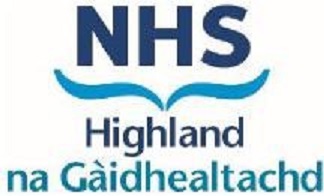- ANP: Advance Nurse Practitioner
- ED: Emergency Department
- FY1: Foundation Year 1 Junior Doctor
- SCIWORA: Spinal chord injury without radiographic abnormality
- VFC: Virtual Fracture Clinic
Orthopaedic on-call (Guidelines)

Warning
Orthopaedic middle grade will be on 24 hours on-call from 7th February 2024.
The orthopaedic registrar on-call rota is changing to a non-resident on-call service to better meet service and training needs.
- Routine advice: usual manner from 07:00 to 00:00.
- 2200 onwards: Contact through switchboard.
- Contact Orthopaedic middle grade on-call between 00:00 and 07:00 for life and limb threatening problems ONLY.
Code-Red Trauma call/ Trauma call
- Acute compartment syndrome
- Neurovascular compromise from fracture/ dislocation*
- Cauda Equina Syndrome
- Open fractures**
- Dislocated native joints that are irreducible in ED
- Paediatric fractures that require manipulation / admission
- Septic joints (after blood tests and X-ray)
*Simple fractures:
- Should follow normal VFC (Virtual Fracture Clinic) protocols.
If it is felt orthopaedic intervention will be required (manipulation in plaster room or fixation/wound treatment in theatre):
- Photocopy the ED notes and leave at ED front desk for collection at 0700 by the orthopaedic registrar.
- The patient will be contacted that morning with a plan.
**Fingers and hands open fracture/ wounds:
- Should have X-ray and can be managed with betadine/saline bath
- Co-amoxiclav (cefuroxime, if penicillin allergy)
- Tetanus booster and application of sterile dressing in ED.
- If no clinical concern of sepsis, follow pathway above i.e. leave notes at front desk for collection by Orthopaedic Registrar.
Direct admission (NOT Code-Red)
The following patients can be admitted directly to the ward overnight to be clerked by Orthopaedic FY1 before 22:00 or ANP after 22:00:
- Neck of femur fracture in elderly who are haemodynamically stable, following Big 6 assessments
- Femur fracture (post Thomas splint and haemodynamically stable)
- Tibia fracture (post above knee backslab and neurovascular intact)
- Tibia plateau fracture (post cricket splint / above knee backslab and neurovascular intact)
- Patients with dislocated hip prosthesis who are haemodynamically stable and neurovascular intact
- Undisplaced/ minimally displaced pelvis/ acetabulum fracture in elderly following fall from standing height and are haemodynamically stable. Isolated pubic rami fractures and proximal humerus fracture are not for orthopaedic admission.
- Closed ankle fracture dislocation that have been adequately reduced and placed in cast/ backslab but not safe for discharge
- SCIWORA: Spinal precautions until MRI scan the following day. Any doubts, contact Registrar/Consultant on-call
Arrange admission:
- Contact the Orthopaedic Co-ordinator (Ext 3001)
The Orthopaedic Co-ordinator will inform the ANP (bleep 5200) and flow team (Ext 2004). - Do NOT contact Hospital at Night team / FY1 directly.
- Peripheral hospitals:
- Admit the patients to the ward locally overnight, if can safely do so and inform ambulance services of early morning transfer.
- Contact Orthopaedic on-call after 07:00 to organise transfer.
- Any concerns: contact Orthopaedic on-call through switch board.
